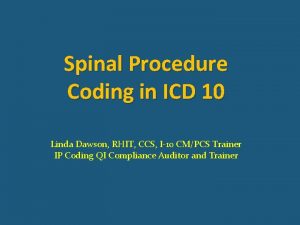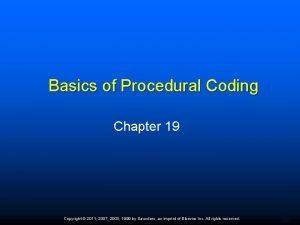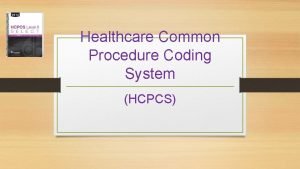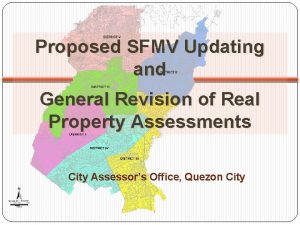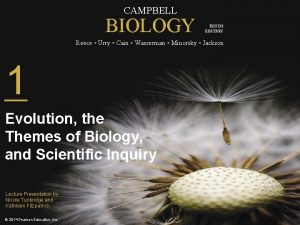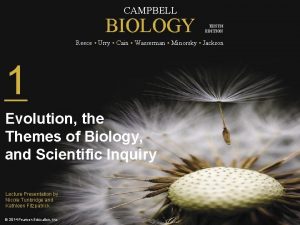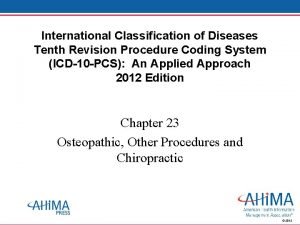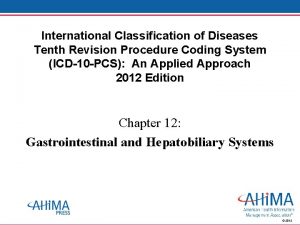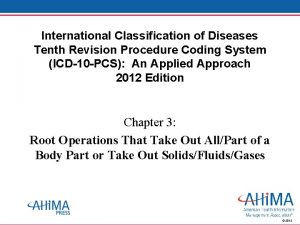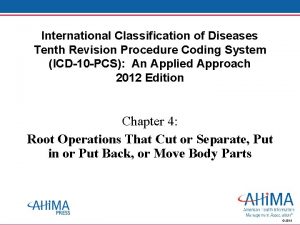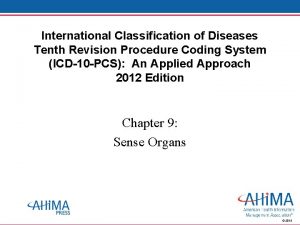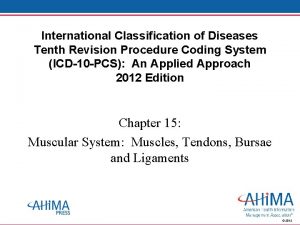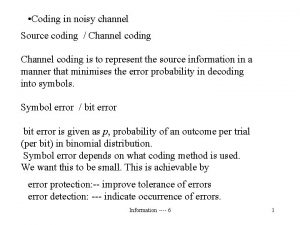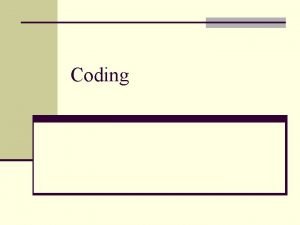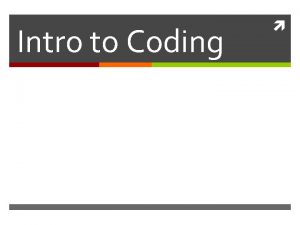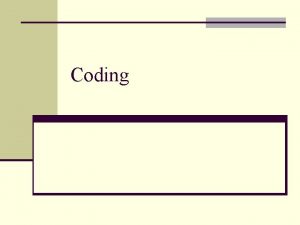International Classification of Diseases Tenth Revision Procedure Coding
















- Slides: 16

International Classification of Diseases Tenth Revision Procedure Coding System (ICD-10 -PCS): An Applied Approach 2012 Edition Chapter 13: Endocrine and Lymphatic Systems © 2012

Endocrine and Lymphatic Systems • Endocrine – releases hormones to direct body functions -G for 2 nd character • Lymphatic-drains fluid from the tissues and helps to protect the body from disease -7 – for 2 nd character © 2012

Functions of the Endocrine System • • Series of small glands Secrete hormones into the blood Regulate body activities Influence cells that have receptor sites for the hormones © 2012

Organization of the Endocrine System • See Figure 13. 1 • Endocrine –pituitary, pineal body, thyroid, parathyroids, adrenals, Islets of Langerhans, gonads • Some Endocrine organs in other body systems -Hypothalamus – Central Nervous System -Pancreas – Hepatobiliary System -Ovary – Female Reproductive System -Testes – Male Reproductive System © 2012

Other Body Parts • • • Carotid body Para-aortic body Coccygeal glomus Glomus Jugulare Paraganglion extremity © 2012

Common Root Operations- Endocrine • Glands do not have tubular body parts - these root operations do not apply • Glands are not transplanted – no Transplantation • See Table 13. 1 © 2012

Body Part Values • See Table 13. 2 -Pituitary gland -Pineal body -Adrenal gland – left, right, bilateral -Carotid body – left, right, bilateral • Not a part of the carotid artery-small epithelial structure -Para-aortic body -Coccygeal glomus -Glomus jugulare -Aortic body © 2012

Approaches in the Endocrine System • • • See Table 13. 3 0 – Open 3 – Percutaneous 4 – Percutaneous Endoscopic X – External -For changing, removing or revising a device © 2012

Devices and Qualifiers in the Endocrine System • See Tables 13. 4 and 13. 5 • Devices 0 - Drainage device 2 – Monitoring device 3 – Infusion device Y – Other device Z – No device • Qualifiers X- Diagnostic Z – No qualifier © 2012

Functions of the Lymphatic System • Returns excess interstitial fluid to blood • Absorbs fat and fat-soluble vitamins • Provides defense against invading microorganisms and disease • Lymph similar to blood plasma in consistency © 2012

Organization of the Lymphatic System • • See Figure 13. 2 Lymph vessels-return lymph to the venous system and take fluids from cells • Lymph nodes -Filter lymph -Greatest concentration – cervical, axillary and inguinal • Inguinal lymph nodes classified to body part value C – lymphatic, pelvis -Thoracic duct – largest lymph vessel • Tonsils -Mouth and Throat body system • Spleen -Removes damaged erythrocytes and stores blood • Thymus-matures and releases T lymphocyte cells • Bone Marrow -Spongy tissue with stem cells © 2012

Common Root Operations in the Lymphatic System • Tubular body parts -Dilation, Occlusion, Restriction • Resection vs. Excision -Entire lymph node chain – Resection -Lymph node(s) - Excision • Transplantation vs. Administration- See Coding Guideline B 3. 16 -Transplant -Thymus and spleen -Administration – Bone marrow and pancreatic islet cells • Extraction -Bone marrow biopsies • See Table 13. 6 © 2012

Body Part Values in Lymphatic System • • See Table 13. 7 Lymph ducts and nodes throughout the body Thoracic duct Cisterna Chyli Thymus Spleen Bone marrow © 2012

Approaches in the Lymphatic System • • • See Table 13. 8 0 – Open 3 – Percutaneous 4 – Percutaneous Endoscopic X – External o Changing, removing or revising a device © 2012

Devices in the Lymphatic System • See Table 13. 9 • Extraluminal and Intraluminal for tubular body parts • Tissue types for Removal, Supplement and Revision • Drainage and infusion devices © 2012

Qualifiers for the Lymphatic System • See Table 13. 10 • Source of transplanted tissue o 0 – Allogeneic o 1 – Syngeneic o 2 - Zooplastic • X – Diagnostic • Z – No qualifier © 2012
 Contoh axial coding
Contoh axial coding Apa itu open coding
Apa itu open coding Revision passive voice
Revision passive voice Coding and logic
Coding and logic Axial coding vs open coding
Axial coding vs open coding Coding dna and non coding dna
Coding dna and non coding dna Vertebroplasty icd 10 code
Vertebroplasty icd 10 code The six sections of the cpt manual include
The six sections of the cpt manual include Healthcare common procedure coding system
Healthcare common procedure coding system Cyst granuloma abscess
Cyst granuloma abscess General revision of assessments and property classification
General revision of assessments and property classification The tenth man graham greene summary
The tenth man graham greene summary Round 348 to the nearest hundred
Round 348 to the nearest hundred Campbell biology tenth edition
Campbell biology tenth edition Campbell biology tenth edition
Campbell biology tenth edition Campbell biology tenth edition
Campbell biology tenth edition 75 rounds to
75 rounds to






